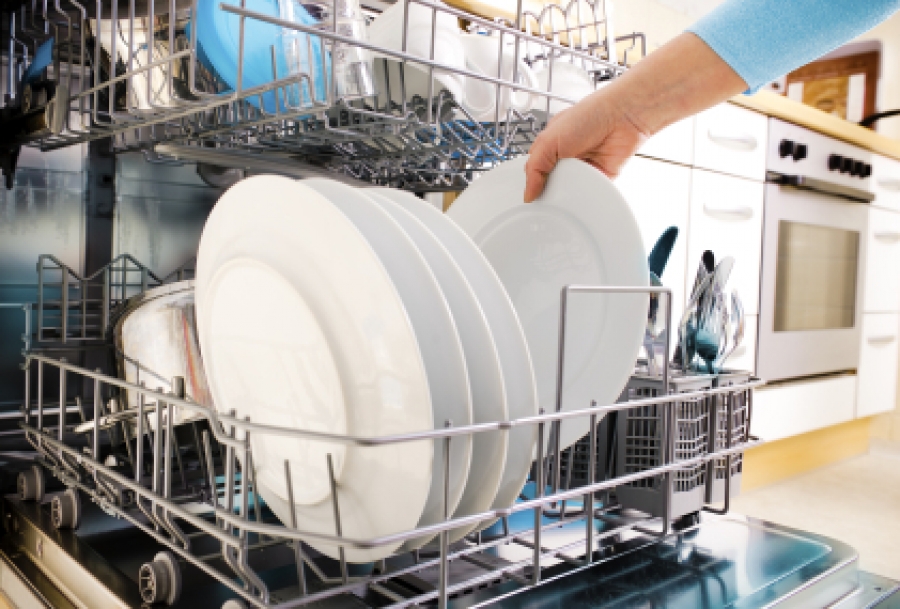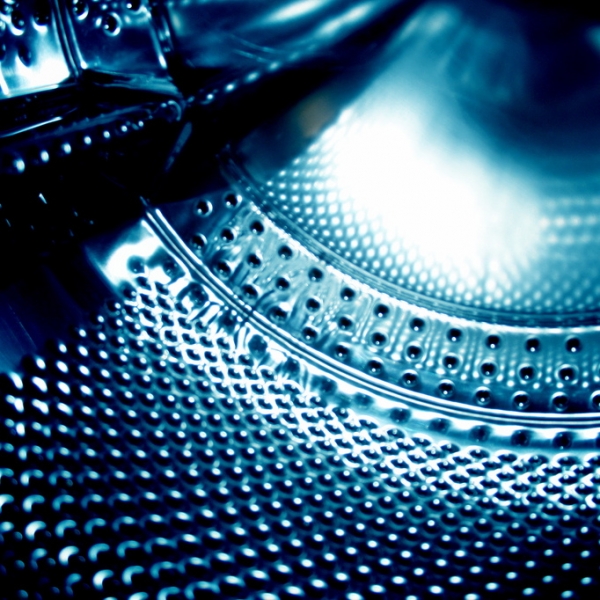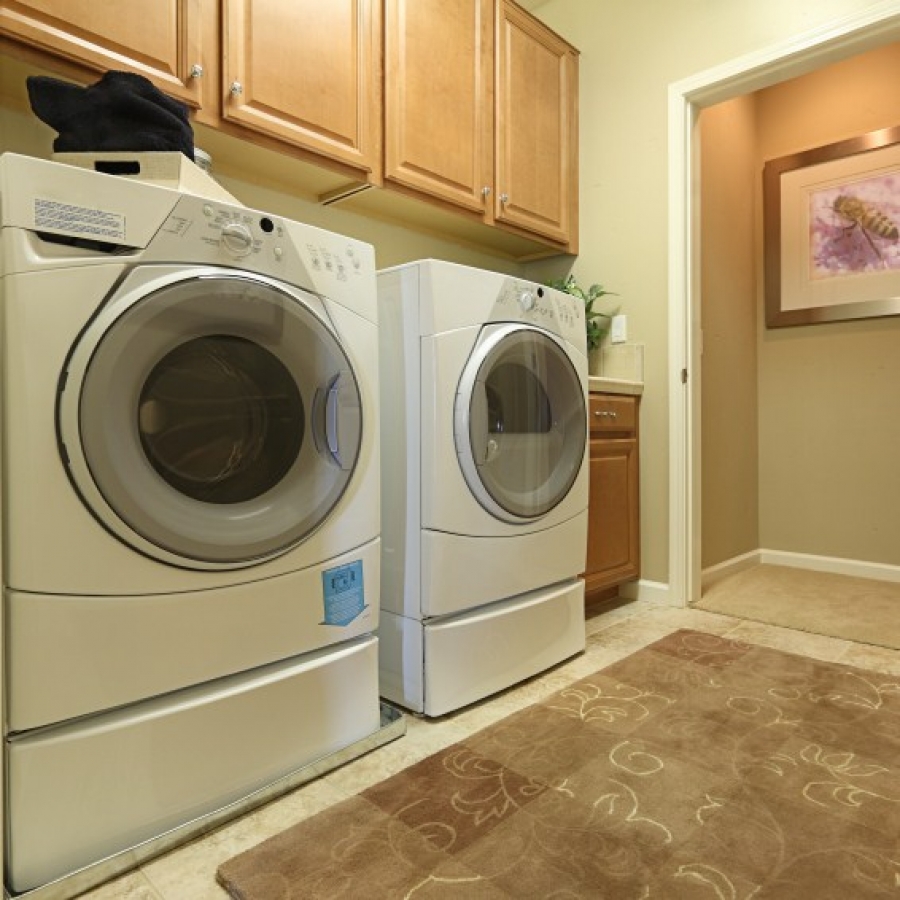Maintenance Tips: Dishwashers
The U.S. Department of Housing and Urban Development's (HUD) 2009 American Housing Survey (AHS) determined that 66% of U.S. households have a dishwasher. It's not really any surprise that two-thirds of our homes have a dishwasher when you consider that today's Energy Star dishwashers will save you time, water, and utility costs. Depending on how often you use your dishwasher, you can expect an average life expectancy of nine years, according to the Study of Life Expectancy of Home Components, prepared in 2007 by the National Association of Home Builders (NAHB). Performing simple maintenance tasks will help your dishwasher last longer than expected and will also reduce the likelihood that your dishwasher will cause water damage to your home.

Dishwasher Operation
Your dishwasher performs a simple task. Maintaining its ability to do so begins during normal, everyday use. Water entering the dishwasher should have a temperature between120? F and 150? F. Quick Tip: You can determine water temperature by placing a thermometer in a glass under a running faucet. Let the hot water run until the temperature stops rising and note the final temperature. If the temperature is more or less than desired, you can adjust your water heater's temperature gauge to an appropriate setting. Consult your water heater owner's manual to ensure a safe, appropriate setting.
Dishwashers don't work alone, they need a detergent to clean dishes. Detergent is available in three different forms: tabs, gels, and powders. Using the appropriate type of detergent and the proper amount will prevent too many suds from developing during a wash cycle, which could result in water leakage. Check your owner's manual to determine what the manufacturer suggests. You should always use a high-quality, lump-free detergent.
If your dishwasher is not going to be used for an extended period of time, you should have the water and power supplies shut off. If your kitchen could be exposed to freezing temperatures, you should winterize the dishwasher to prevent any water damage.
Cleaning Your Dishwasher
If your dishwasher isn't working as well as you might expect, it doesn't necessarily need to be repaired or replaced. Keeping your dishes clean starts with keeping the interior surfaces of your dishwasher clean. Regular use will clean the interior surfaces. However, if you don't use your dishwasher every week you should clean the interior surfaces once every month. Cleaning will break down mineral buildup on the interior walls and mechanical components. If you happen to live in an area that has hard water, you will want to use a water softener to resolve heavy mineral deposits that could damage the dishwasher.
The interior surfaces can be lightly cleaned after the dishwasher has cooled down. A paste of powdered dishwasher detergent and water or a liquid dishwasher detergent can be used with a damp sponge or cloth to wipe down the interior surfaces. Quick Tip: For a more thorough cleaning, place two cups or even a quart of white vinegar into an upright container on the lower dish rack. Then run the dishwasher with no detergent on a normal cycle with the heated dry option turned off. Dishwasher cleaners are available that can be used to clean the interior of your appliance. From time to time, you may see a discoloration of the interior surface of your dishwasher. This can result from high iron content in the water or from tomato-based foods. Consider using a commercially available citrus-based cleaner to remove the discoloration.
The exterior door panel is what most people notice first. The type of dishwasher you have will determine how you clean the exterior door panel. Steel door panels (painted or unpainted) can be kept clean with a soft, damp cloth. Appliance wax or polish can be used on painted door panels; however, it should not be used on unpainted steel door panels. Stainless steel door panels require specific cleaners: check to see which is recommended by your appliance manufacturer.
Rust stains can occur on the inside surface of a dishwasher, usually where the plastic coating on a dish rack tine has worn away. Protecting the tines from continued degradation can be accomplished by recoating them. Manufacturers offer vinyl repair kits for the various colors of dish racks.
Dishwasher Components
Dishwashers need to be installed on the level. Water on a kitchen floor near the dishwasher could result from an unlevel appliance or a damaged door gasket. A dishwasher can be leveled by adjusting the front feet. The door gasket should be cleaned periodically to remove soap scum and debris that could create a gap that would allow water to exit. Door gaskets become dry, especially if appliance use is minimal. Inspect the gasket and look for missing, cracked, or deteriorated material. If you see any damaged material, you should replace the door gasket. Replacement gaskets can be ordered from your dishwasher manufacturer.
Filtration
The filtration system is located inside the dishwasher along the base, below the lower rack. The filter should be cleaned of debris to ensure proper performance and to prevent damage to the pump, motor, and seals. Refer to your owner's manual to determine the filter location and proper method of removal. Clean and inspect the filter by looking for gaps or holes. Should you notice any, replace the filter. Filters should be cleaned under running water at regular intervals as defined by the manufacturer; this cleaning doesn't require the use of a wire brush or scouring pad. Poor performance, food debris, and dishes with a gritty residue are all signs that you may need to clean your filter.
Spray Arm and Drainage
Mechanical spray arms deliver water during a wash cycle. The arms have small holes that can become clogged with food debris. Removing the debris from the small holes of the spray arms will help to ensure top performance. If your dishwasher isn't draining correctly and water remains in the tub after a complete cycle, check for kinks or obstructions in the drain hose. If any kinks or obstructions are noticed, you should disconnect the hose, straighten the hose or remove the obstruction, and reconnect the hose. Your appliance may require a drain air gap. If one is installed, it too could be related to a drainage problem. Remove the drain air gap cap and clean the air gap with a toothpick to allow air flow.
Safety
Before working on an appliance like a dishwasher, it is good practice to unplug or shut off the power supply to the appliance. The power supply to a dishwasher should be turned off at the electric panel. Also, the U.S. Consumer Product Safety Commission (CPSC) works to ensure the safety of consumer products. The CPSC provides information on dishwashers that have been recalled, in an effort to help to protect consumers.

Buildipedia Staff
The Buildipedia research and writing staff consists of dozens of experienced professionals from many sectors of the industry, including architects, designers, contractors, and engineers.
Website: buildipedia.com/




